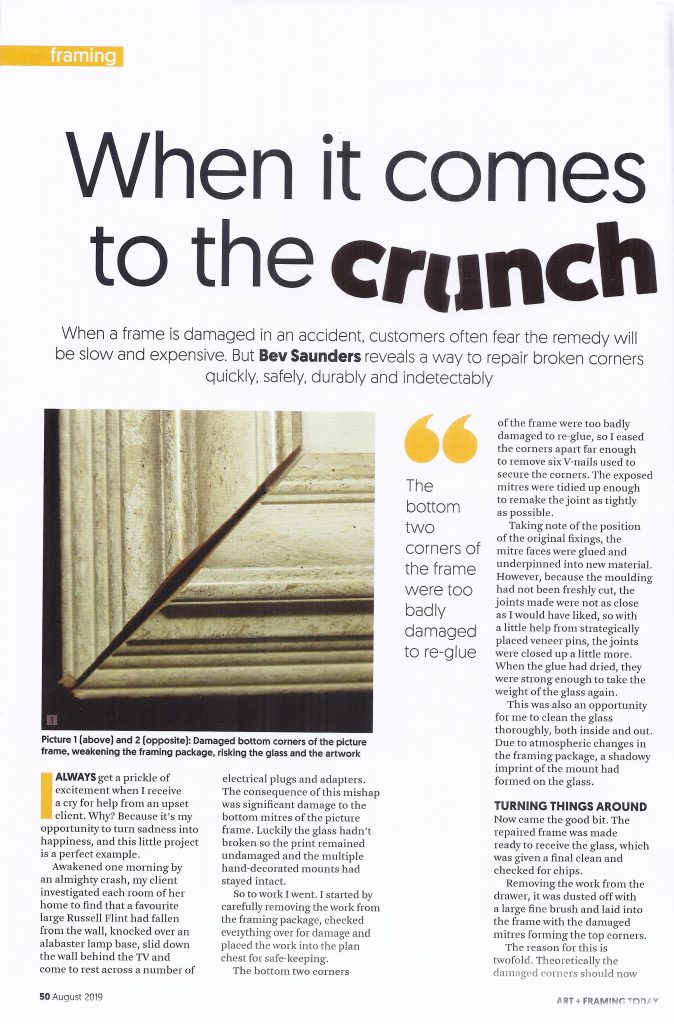
I am chuffed to bits to have another article in the Fine Art Trade Guild’s fabulous trade magazine. It’s the August 2019 edition of “Art + Framing Today”. The item is about how I helped a client who’s favourite framed print fell off the wall. Hope you enjoy the read and do contact me if you have a rather special frame that has been damaged. You never know I might be able to help.
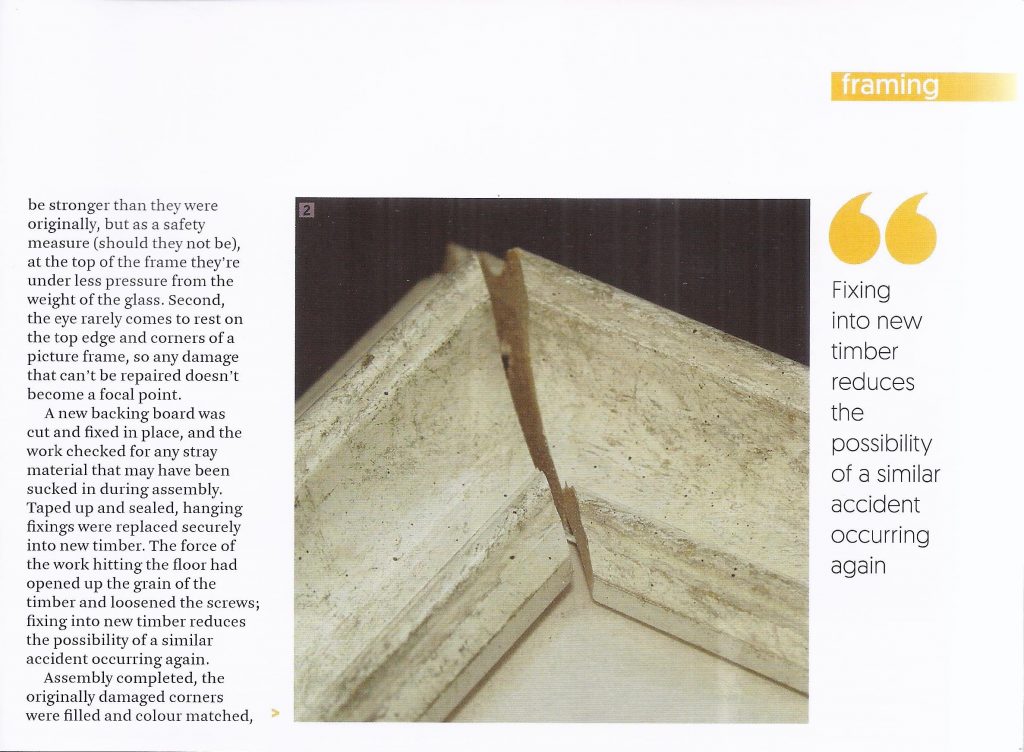
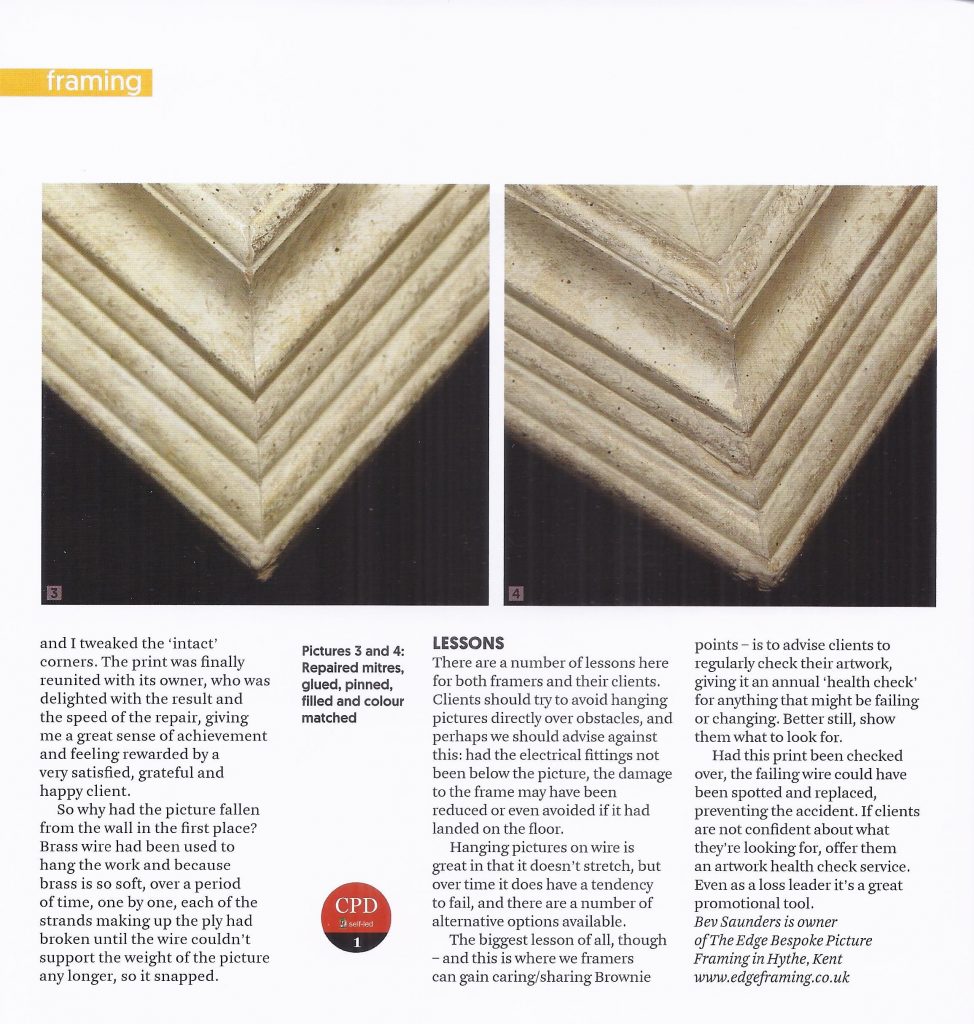
“I always get a prickle of excitement when I receive a cry for help from an upset client. Why? Because it’s my opportunity to turn sadness into happiness, and this little project is a perfect example.
Awakened one morning by an almighty crash, my client investigated each room of her home to find that a favourite large Russell Flint had fallen from the wall, knocked over an alabaster lamp base, slid down the wall behind the TV and came to rest across a number of electrical plugs, and adaptors. The consequence of which was significant damage to the bottom mitres of the picture frame. Luckily the glass hadn’t broken so the print remained undamaged and the multiple hand decorated mounts had stayed intact.
So to work I went. I started by carefully removing the work from the framing package, checked everything over for damage and placed the work into the plan chest for safe keeping. The bottom two corners of the frame were too badly damaged to re-glue, so I eased the corners apart far enough to remove six “V” nails used to secure the corners. The exposed mitres were tidied up enough to remake the joint as tight as possible. Taking note of the position of the original fixings the mitre faces were glued and underpinned into new material. However because the moulding had not been freshly cut the joints made were not as close as I would have liked, so with a little help from strategically placed veneer pins, the joints were closed up a little more and when the glue had dried, were strong enough to take the weight of the glass again. This was also an opportunity for me to clean the glass thoroughly, both inside and out. Due to atmospheric changes in the framing package, a shadowy imprint of the mount had formed on the glass.
Now came the good bit. The repaired frame was made ready to receive the glass, which was given a final clean and checked for chips. Removing the work from the drawer, it was dusted off with a large fine brush and laid into the frame with the damaged mitres forming the top corners. The reason for this? Two fold. Theoretically the damaged corners should now be stronger than they were originally, but as a safety measure (should they not be), at the top of the frame they’re under less pressure from the weight of the glass. Secondly the eye rarely comes to rest on the top edge and corners of a picture frame, so any damage that can’t be repaired doesn’t become a focal point. A new backing board was cut and fixed in place, and the work checked for any stray material that may have been sucked in during assembly. Taped up and sealed, hanging fixings were replaced securely into new timber. The force of the work hitting the floor had opened up the grain of the timber and loosened screws, fixing into new timber reduces the possibility of a similar accident occurring again. Assembly completed, the originally damaged corners were filled and colour matched, and I tweaked the “intact” corners. The print was finally reunited with its owner, who was delighted with the result and the speed of the repair, giving me a great sense of achievement and feeling rewarded by a very satisfied, grateful and happy client.
So why had the picture fallen from the wall in the first place? Brass wire had been used to hang the work and because brass is so soft, over a period of time one by one each of the strands making up the ply had broken until the wire couldn’t support the weight of the picture any longer, so it snapped.
There are a number of lessons here for both framers and their clients. Clients should try to avoid hanging pictures directly over obstacles, and perhaps we should advise against this; had the electrical fittings not been below the picture the damage to the frame may have been reduced or even avoided if it had landed on the floor. Hanging pictures on wire is great in that it doesn’t stretch, however in time it does have a tendency to fail, and there are a number of alternative options available. The biggest lesson of all though, and this is where we framers can gain caring/sharing Brownie points is to advise clients to regularly check their artwork, give it an annual “health check” for anything that might be failing or changing. Better still; show them what to look for. Had this print been checked over the failing wire could have been spotted and replaced, preventing the accident. If clients are not confident about what they’re looking for offer them an artwork health check service, even as a loss leader it’s a great promotional tool.”


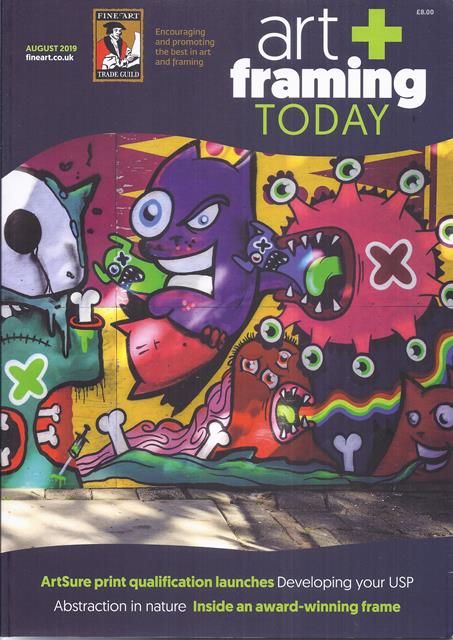
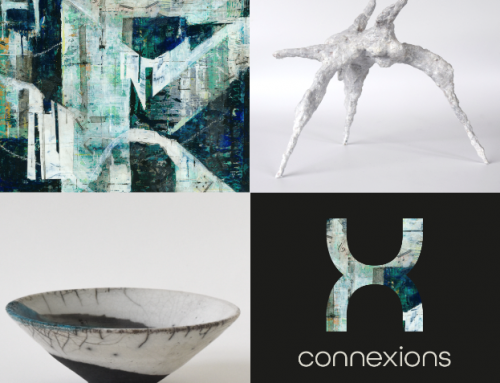




Leave A Comment